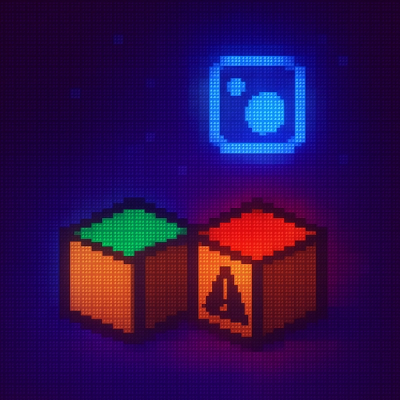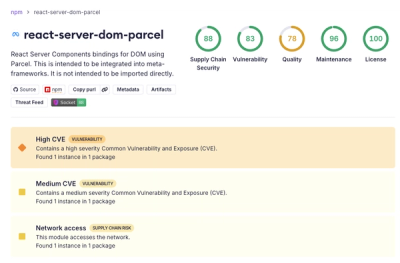
Graphiti
Build Real-Time Knowledge Graphs for AI Agents
:star: Help us reach more developers and grow the Graphiti community. Star this repo!
[!TIP]
Check out the new MCP server for Graphiti! Give Claude, Cursor, and other MCP clients powerful
Knowledge Graph-based memory.
Graphiti is a framework for building and querying temporally-aware knowledge graphs, specifically tailored for AI agents
operating in dynamic environments. Unlike traditional retrieval-augmented generation (RAG) methods, Graphiti
continuously integrates user interactions, structured and unstructured enterprise data, and external information into a
coherent, queryable graph. The framework supports incremental data updates, efficient retrieval, and precise historical
queries without requiring complete graph recomputation, making it suitable for developing interactive, context-aware AI
applications.
Use Graphiti to:
- Integrate and maintain dynamic user interactions and business data.
- Facilitate state-based reasoning and task automation for agents.
- Query complex, evolving data with semantic, keyword, and graph-based search methods.

A knowledge graph is a network of interconnected facts, such as "Kendra loves Adidas shoes." Each fact is a "triplet"
represented by two entities, or
nodes ("Kendra", "Adidas shoes"), and their relationship, or edge ("loves"). Knowledge Graphs have been explored
extensively for information retrieval. What makes Graphiti unique is its ability to autonomously build a knowledge graph
while handling changing relationships and maintaining historical context.
Graphiti and Zep's Context Engineering Platform.
Graphiti powers the core of Zep, a turn-key context engineering platform for AI Agents. Zep
offers agent memory, Graph RAG for dynamic data, and context retrieval and assembly.
Using Graphiti, we've demonstrated Zep is
the State of the Art in Agent Memory.
Read our paper: Zep: A Temporal Knowledge Graph Architecture for Agent Memory.
We're excited to open-source Graphiti, believing its potential reaches far beyond AI memory applications.

Zep vs Graphiti
| What they are | Fully managed platform for context engineering and AI memory | Open-source graph framework |
| User & conversation management | Built-in users, threads, and message storage | Build your own |
| Retrieval & performance | Pre-configured, production-ready retrieval with sub-200ms performance at scale | Custom implementation required; performance depends on your setup |
| Developer tools | Dashboard with graph visualization, debug logs, API logs; SDKs for Python, TypeScript, and Go | Build your own tools |
| Enterprise features | SLAs, support, security guarantees | Self-managed |
| Deployment | Fully managed or in your cloud | Self-hosted only |
When to choose which
Choose Zep if you want a turnkey, enterprise-grade platform with security, performance, and support baked in.
Choose Graphiti if you want a flexible OSS core and you're comfortable building/operating the surrounding system.
Why Graphiti?
Traditional RAG approaches often rely on batch processing and static data summarization, making them inefficient for
frequently changing data. Graphiti addresses these challenges by providing:
- Real-Time Incremental Updates: Immediate integration of new data episodes without batch recomputation.
- Bi-Temporal Data Model: Explicit tracking of event occurrence and ingestion times, allowing accurate point-in-time
queries.
- Efficient Hybrid Retrieval: Combines semantic embeddings, keyword (BM25), and graph traversal to achieve
low-latency queries without reliance on LLM summarization.
- Custom Entity Definitions: Flexible ontology creation and support for developer-defined entities through
straightforward Pydantic models.
- Scalability: Efficiently manages large datasets with parallel processing, suitable for enterprise environments.

Graphiti vs. GraphRAG
| Primary Use | Static document summarization | Dynamic data management |
| Data Handling | Batch-oriented processing | Continuous, incremental updates |
| Knowledge Structure | Entity clusters & community summaries | Episodic data, semantic entities, communities |
| Retrieval Method | Sequential LLM summarization | Hybrid semantic, keyword, and graph-based search |
| Adaptability | Low | High |
| Temporal Handling | Basic timestamp tracking | Explicit bi-temporal tracking |
| Contradiction Handling | LLM-driven summarization judgments | Temporal edge invalidation |
| Query Latency | Seconds to tens of seconds | Typically sub-second latency |
| Custom Entity Types | No | Yes, customizable |
| Scalability | Moderate | High, optimized for large datasets |
Graphiti is specifically designed to address the challenges of dynamic and frequently updated datasets, making it
particularly suitable for applications requiring real-time interaction and precise historical queries.
Installation
Requirements:
- Python 3.10 or higher
- Neo4j 5.26 / FalkorDB 1.1.2 / Kuzu 0.11.2 / Amazon Neptune Database Cluster or Neptune Analytics Graph + Amazon
OpenSearch Serverless collection (serves as the full text search backend)
- OpenAI API key (Graphiti defaults to OpenAI for LLM inference and embedding)
[!IMPORTANT]
Graphiti works best with LLM services that support Structured Output (such as OpenAI and Gemini).
Using other services may result in incorrect output schemas and ingestion failures. This is particularly
problematic when using smaller models.
Optional:
- Google Gemini, Anthropic, or Groq API key (for alternative LLM providers)
[!TIP]
The simplest way to install Neo4j is via Neo4j Desktop. It provides a user-friendly
interface to manage Neo4j instances and databases.
Alternatively, you can use FalkorDB on-premises via Docker and instantly start with the quickstart example:
docker run -p 6379:6379 -p 3000:3000 -it --rm falkordb/falkordb:latest
pip install graphiti-core
or
uv add graphiti-core
Installing with FalkorDB Support
If you plan to use FalkorDB as your graph database backend, install with the FalkorDB extra:
pip install graphiti-core[falkordb]
uv add graphiti-core[falkordb]
Installing with Kuzu Support
If you plan to use Kuzu as your graph database backend, install with the Kuzu extra:
pip install graphiti-core[kuzu]
uv add graphiti-core[kuzu]
Installing with Amazon Neptune Support
If you plan to use Amazon Neptune as your graph database backend, install with the Amazon Neptune extra:
pip install graphiti-core[neptune]
uv add graphiti-core[neptune]
pip install graphiti-core[anthropic]
pip install graphiti-core[groq]
pip install graphiti-core[google-genai]
pip install graphiti-core[anthropic,groq,google-genai]
pip install graphiti-core[falkordb,anthropic,google-genai]
pip install graphiti-core[neptune]
Default to Low Concurrency; LLM Provider 429 Rate Limit Errors
Graphiti's ingestion pipelines are designed for high concurrency. By default, concurrency is set low to avoid LLM
Provider 429 Rate Limit Errors. If you find Graphiti slow, please increase concurrency as described below.
Concurrency controlled by the SEMAPHORE_LIMIT environment variable. By default, SEMAPHORE_LIMIT is set to 10
concurrent operations to help prevent 429 rate limit errors from your LLM provider. If you encounter such errors, try
lowering this value.
If your LLM provider allows higher throughput, you can increase SEMAPHORE_LIMIT to boost episode ingestion
performance.
Quick Start
[!IMPORTANT]
Graphiti defaults to using OpenAI for LLM inference and embedding. Ensure that an OPENAI_API_KEY is set in your
environment.
Support for Anthropic and Groq LLM inferences is available, too. Other LLM providers may be supported via OpenAI
compatible APIs.
For a complete working example, see the Quickstart Example in the examples directory.
The quickstart demonstrates:
- Connecting to a Neo4j, Amazon Neptune, FalkorDB, or Kuzu database
- Initializing Graphiti indices and constraints
- Adding episodes to the graph (both text and structured JSON)
- Searching for relationships (edges) using hybrid search
- Reranking search results using graph distance
- Searching for nodes using predefined search recipes
The example is fully documented with clear explanations of each functionality and includes a comprehensive README with
setup instructions and next steps.
Running with Docker Compose
You can use Docker Compose to quickly start the required services:
-
Neo4j Docker:
docker compose up
This will start the Neo4j Docker service and related components.
-
FalkorDB Docker:
docker compose --profile falkordb up
This will start the FalkorDB Docker service and related components.
MCP Server
The mcp_server directory contains a Model Context Protocol (MCP) server implementation for Graphiti. This server
allows AI assistants to interact with Graphiti's knowledge graph capabilities through the MCP protocol.
Key features of the MCP server include:
- Episode management (add, retrieve, delete)
- Entity management and relationship handling
- Semantic and hybrid search capabilities
- Group management for organizing related data
- Graph maintenance operations
The MCP server can be deployed using Docker with Neo4j, making it easy to integrate Graphiti into your AI assistant
workflows.
For detailed setup instructions and usage examples, see the MCP server README.
REST Service
The server directory contains an API service for interacting with the Graphiti API. It is built using FastAPI.
Please see the server README for more information.
Optional Environment Variables
In addition to the Neo4j and OpenAi-compatible credentials, Graphiti also has a few optional environment variables.
If you are using one of our supported models, such as Anthropic or Voyage models, the necessary environment variables
must be set.
Database Configuration
Database names are configured directly in the driver constructors:
- Neo4j: Database name defaults to
neo4j (hardcoded in Neo4jDriver)
- FalkorDB: Database name defaults to
default_db (hardcoded in FalkorDriver)
As of v0.17.0, if you need to customize your database configuration, you can instantiate a database driver and pass it
to the Graphiti constructor using the graph_driver parameter.
Neo4j with Custom Database Name
from graphiti_core import Graphiti
from graphiti_core.driver.neo4j_driver import Neo4jDriver
driver = Neo4jDriver(
uri="bolt://localhost:7687",
user="neo4j",
password="password",
database="my_custom_database"
)
graphiti = Graphiti(graph_driver=driver)
FalkorDB with Custom Database Name
from graphiti_core import Graphiti
from graphiti_core.driver.falkordb_driver import FalkorDriver
driver = FalkorDriver(
host="localhost",
port=6379,
username="falkor_user",
password="falkor_password",
database="my_custom_graph"
)
graphiti = Graphiti(graph_driver=driver)
Kuzu
from graphiti_core import Graphiti
from graphiti_core.driver.kuzu_driver import KuzuDriver
driver = KuzuDriver(db="/tmp/graphiti.kuzu")
graphiti = Graphiti(graph_driver=driver)
Amazon Neptune
from graphiti_core import Graphiti
from graphiti_core.driver.neptune_driver import NeptuneDriver
driver = NeptuneDriver(
host= < NEPTUNE
ENDPOINT >,
aoss_host = < Amazon
OpenSearch
Serverless
Host >,
port = < PORT >
aoss_port = < PORT >
)
driver = NeptuneDriver(host=neptune_uri, aoss_host=aoss_host, port=neptune_port)
graphiti = Graphiti(graph_driver=driver)
Using Graphiti with Azure OpenAI
Graphiti supports Azure OpenAI for both LLM inference and embeddings using Azure's OpenAI v1 API compatibility layer.
Quick Start
from openai import AsyncOpenAI
from graphiti_core import Graphiti
from graphiti_core.llm_client.azure_openai_client import AzureOpenAILLMClient
from graphiti_core.llm_client.config import LLMConfig
from graphiti_core.embedder.azure_openai import AzureOpenAIEmbedderClient
azure_client = AsyncOpenAI(
base_url="https://your-resource-name.openai.azure.com/openai/v1/",
api_key="your-api-key",
)
llm_client = AzureOpenAILLMClient(
azure_client=azure_client,
config=LLMConfig(model="gpt-5-mini", small_model="gpt-5-mini")
)
embedder_client = AzureOpenAIEmbedderClient(
azure_client=azure_client,
model="text-embedding-3-small"
)
graphiti = Graphiti(
"bolt://localhost:7687",
"neo4j",
"password",
llm_client=llm_client,
embedder=embedder_client,
)
Key Points:
- Use the standard
AsyncOpenAI client with Azure's v1 API endpoint format: https://your-resource-name.openai.azure.com/openai/v1/
- The deployment names (e.g.,
gpt-5-mini, text-embedding-3-small) should match your Azure OpenAI deployment names
- See
examples/azure-openai/ for a complete working example
Make sure to replace the placeholder values with your actual Azure OpenAI credentials and deployment names.
Using Graphiti with Google Gemini
Graphiti supports Google's Gemini models for LLM inference, embeddings, and cross-encoding/reranking. To use Gemini,
you'll need to configure the LLM client, embedder, and the cross-encoder with your Google API key.
Install Graphiti:
uv add "graphiti-core[google-genai]"
pip install "graphiti-core[google-genai]"
from graphiti_core import Graphiti
from graphiti_core.llm_client.gemini_client import GeminiClient, LLMConfig
from graphiti_core.embedder.gemini import GeminiEmbedder, GeminiEmbedderConfig
from graphiti_core.cross_encoder.gemini_reranker_client import GeminiRerankerClient
api_key = "<your-google-api-key>"
graphiti = Graphiti(
"bolt://localhost:7687",
"neo4j",
"password",
llm_client=GeminiClient(
config=LLMConfig(
api_key=api_key,
model="gemini-2.0-flash"
)
),
embedder=GeminiEmbedder(
config=GeminiEmbedderConfig(
api_key=api_key,
embedding_model="embedding-001"
)
),
cross_encoder=GeminiRerankerClient(
config=LLMConfig(
api_key=api_key,
model="gemini-2.5-flash-lite"
)
)
)
The Gemini reranker uses the gemini-2.5-flash-lite model by default, which is optimized for
cost-effective and low-latency classification tasks. It uses the same boolean classification approach as the OpenAI
reranker, leveraging Gemini's log probabilities feature to rank passage relevance.
Using Graphiti with Ollama (Local LLM)
Graphiti supports Ollama for running local LLMs and embedding models via Ollama's OpenAI-compatible API. This is ideal
for privacy-focused applications or when you want to avoid API costs.
Note: Use OpenAIGenericClient (not OpenAIClient) for Ollama and other OpenAI-compatible providers like LM Studio. The OpenAIGenericClient is optimized for local models with a higher default max token limit (16K vs 8K) and full support for structured outputs.
Install the models:
ollama pull deepseek-r1:7b
ollama pull nomic-embed-text
from graphiti_core import Graphiti
from graphiti_core.llm_client.config import LLMConfig
from graphiti_core.llm_client.openai_generic_client import OpenAIGenericClient
from graphiti_core.embedder.openai import OpenAIEmbedder, OpenAIEmbedderConfig
from graphiti_core.cross_encoder.openai_reranker_client import OpenAIRerankerClient
llm_config = LLMConfig(
api_key="ollama",
model="deepseek-r1:7b",
small_model="deepseek-r1:7b",
base_url="http://localhost:11434/v1",
)
llm_client = OpenAIGenericClient(config=llm_config)
graphiti = Graphiti(
"bolt://localhost:7687",
"neo4j",
"password",
llm_client=llm_client,
embedder=OpenAIEmbedder(
config=OpenAIEmbedderConfig(
api_key="ollama",
embedding_model="nomic-embed-text",
embedding_dim=768,
base_url="http://localhost:11434/v1",
)
),
cross_encoder=OpenAIRerankerClient(client=llm_client, config=llm_config),
)
Ensure Ollama is running (ollama serve) and that you have pulled the models you want to use.
Documentation
Telemetry
Graphiti collects anonymous usage statistics to help us understand how the framework is being used and improve it for
everyone. We believe transparency is important, so here's exactly what we collect and why.
What We Collect
When you initialize a Graphiti instance, we collect:
- Anonymous identifier: A randomly generated UUID stored locally in
~/.cache/graphiti/telemetry_anon_id
- System information: Operating system, Python version, and system architecture
- Graphiti version: The version you're using
- Configuration choices:
- LLM provider type (OpenAI, Azure, Anthropic, etc.)
- Database backend (Neo4j, FalkorDB, Kuzu, Amazon Neptune Database or Neptune Analytics)
- Embedder provider (OpenAI, Azure, Voyage, etc.)
What We Don't Collect
We are committed to protecting your privacy. We never collect:
- Personal information or identifiers
- API keys or credentials
- Your actual data, queries, or graph content
- IP addresses or hostnames
- File paths or system-specific information
- Any content from your episodes, nodes, or edges
Why We Collect This Data
This information helps us:
- Understand which configurations are most popular to prioritize support and testing
- Identify which LLM and database providers to focus development efforts on
- Track adoption patterns to guide our roadmap
- Ensure compatibility across different Python versions and operating systems
By sharing this anonymous information, you help us make Graphiti better for everyone in the community.
View the Telemetry Code
The Telemetry code may be found here.
How to Disable Telemetry
Telemetry is opt-out and can be disabled at any time. To disable telemetry collection:
Option 1: Environment Variable
export GRAPHITI_TELEMETRY_ENABLED=false
Option 2: Set in your shell profile
echo 'export GRAPHITI_TELEMETRY_ENABLED=false' >> ~/.bashrc
echo 'export GRAPHITI_TELEMETRY_ENABLED=false' >> ~/.zshrc
Option 3: Set for a specific Python session
import os
os.environ['GRAPHITI_TELEMETRY_ENABLED'] = 'false'
from graphiti_core import Graphiti
graphiti = Graphiti(...)
Telemetry is automatically disabled during test runs (when pytest is detected).
Technical Details
- Telemetry uses PostHog for anonymous analytics collection
- All telemetry operations are designed to fail silently - they will never interrupt your application or affect Graphiti
functionality
- The anonymous ID is stored locally and is not tied to any personal information
Status and Roadmap
Graphiti is under active development. We aim to maintain API stability while working on:
Contributing
We encourage and appreciate all forms of contributions, whether it's code, documentation, addressing GitHub Issues, or
answering questions in the Graphiti Discord channel. For detailed guidelines on code contributions, please refer
to CONTRIBUTING.
Support
Join the Zep Discord server and make your way to the #Graphiti channel!










